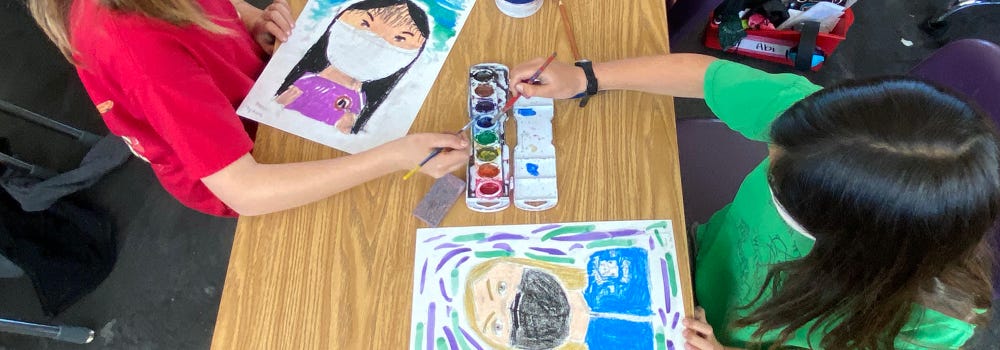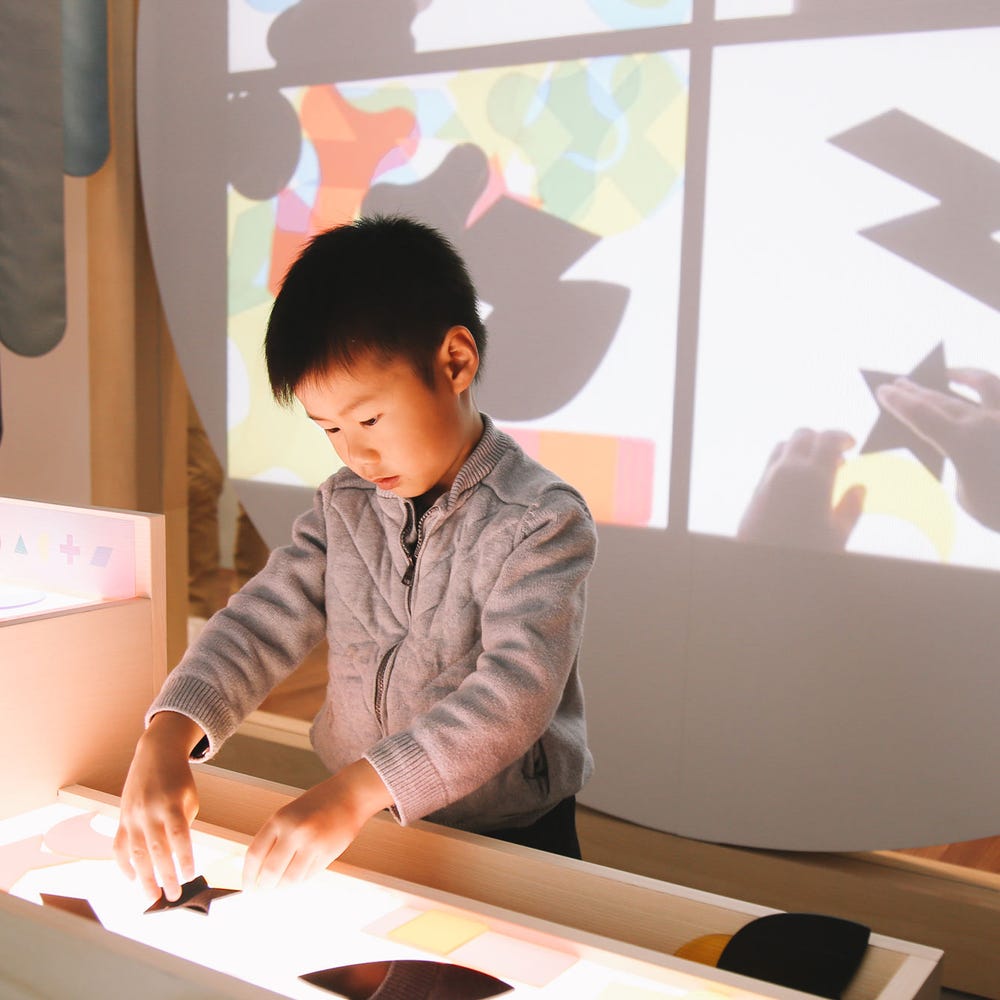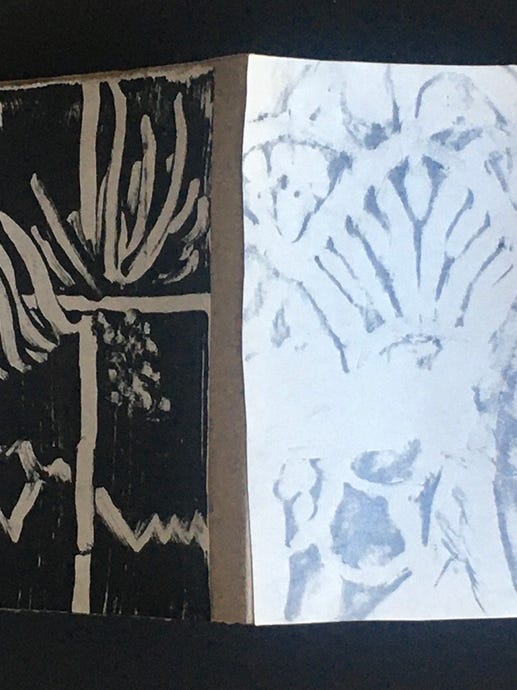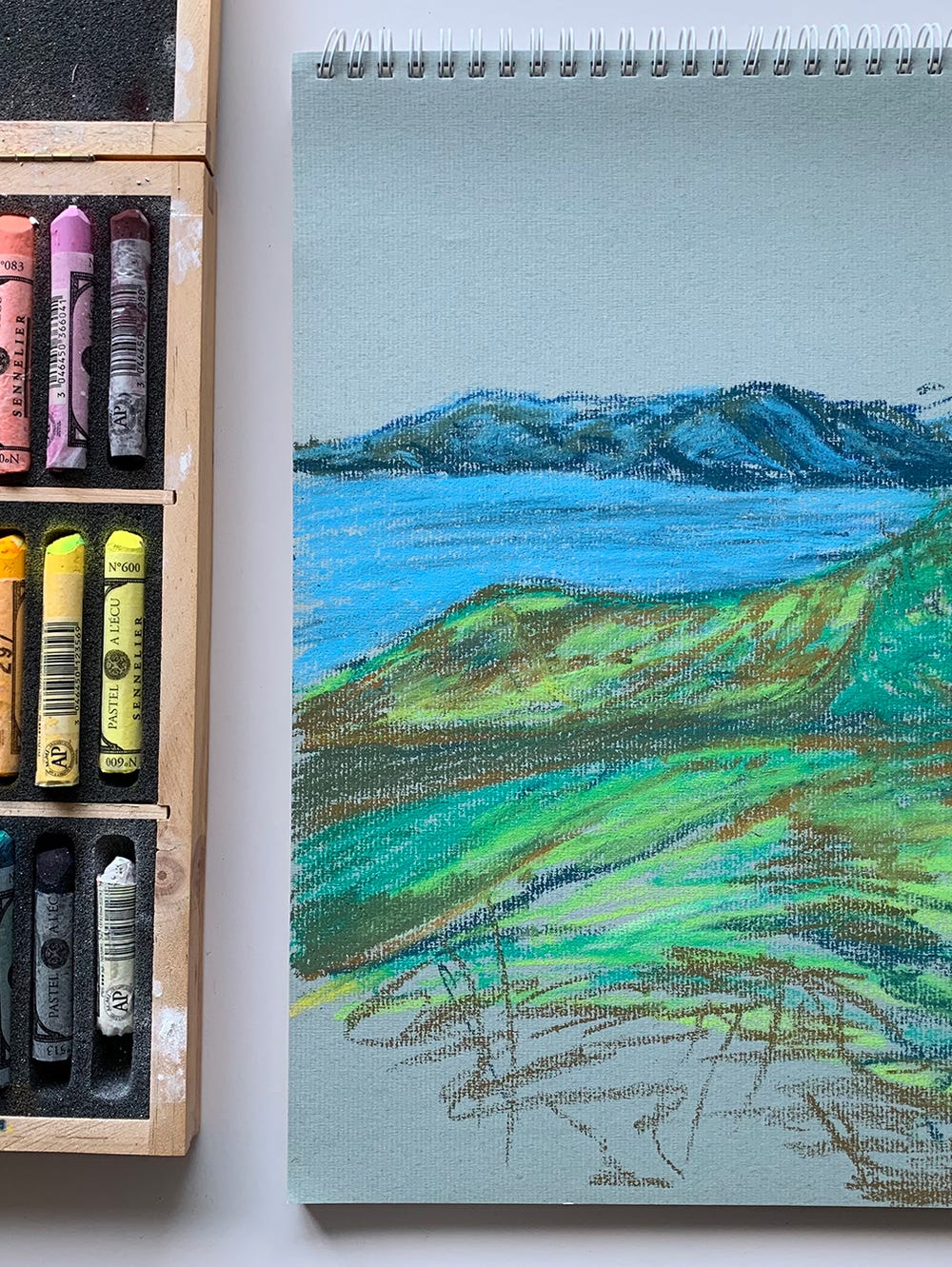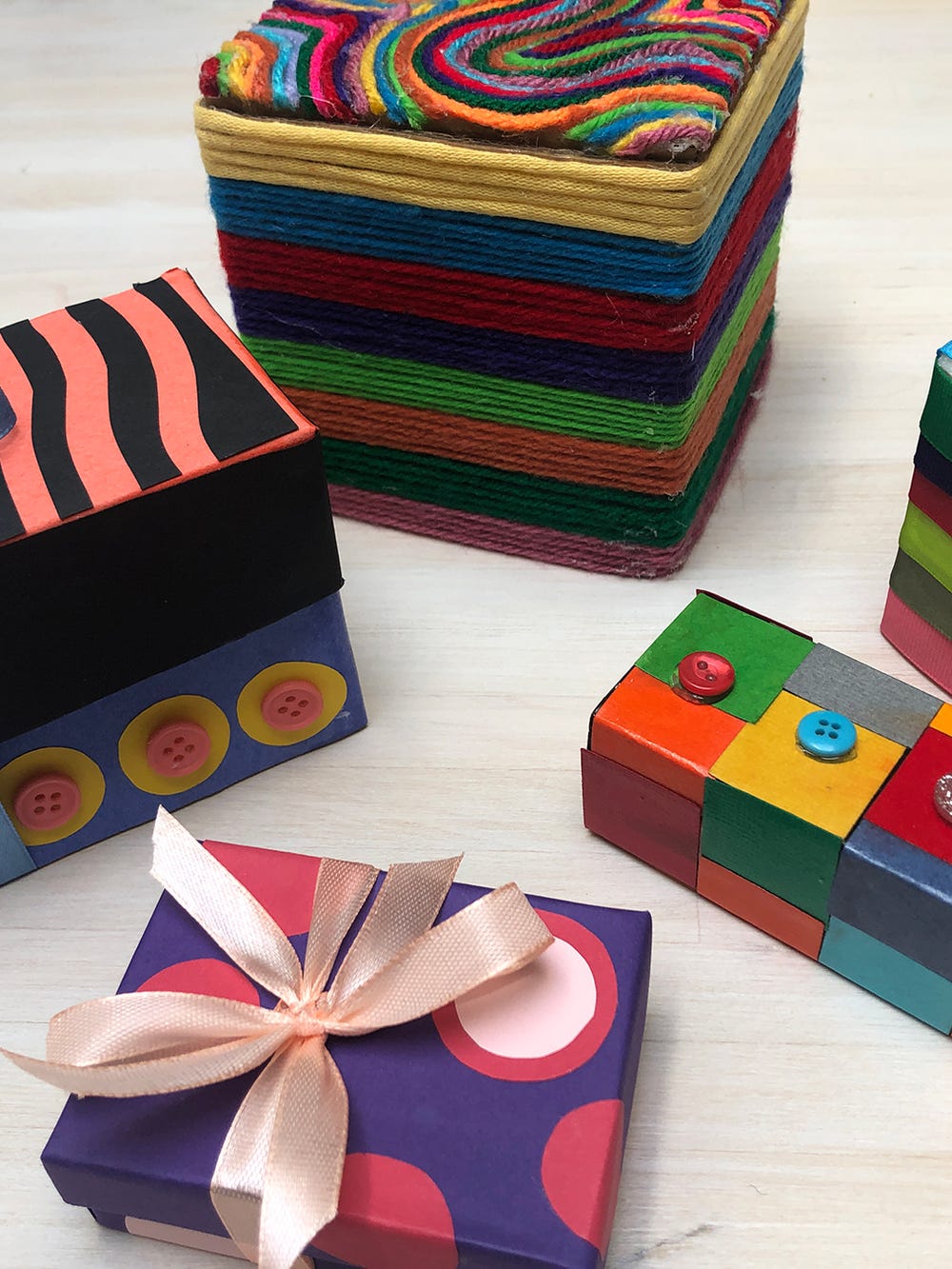de Youngsters Studio: Portraits with Friends
By Jill McLennan, senior teaching artist
May 5, 2022
For this project, inspired by Alice Neel’s The Black Boys (1967), participants partner with a friend or family member to experience the roles of both posing for a portrait as the sitter and creating a portrait as the artist. (Note: you can work from a photograph if no sitter is available.) The process of creating the portrait will strengthen the sitter and artist’s emotional bond, which will show in the final portraits.
Materials
- Cardstock or watercolor paper
- Pencil, eraser
- Colored pencils, oil pastels, and/or watercolor paints
Role of the Artist
- Make the sitter feel comfortable
- Create a likeness of the person to the best of your ability
Role of the Sitter
- Choose a pose and expression, and hold still for 10 minutes
- Trust the artist to create an honest representation of you to the best of their ability
Questions to Consider
Which role will you take on first? As the sitter, what will you wear and how will you pose for your portrait? As the artist, how will you capture the personality of the person you are drawing in the portrait?
Steps
1. Choose a partner and set up your work space across from them. Then decide who will begin in each role, artist and sitter.
2. The sitter prepares their pose and gaze and holds it for up to 10 minutes.
3. The artist sketches out the face, neck, and upper body of the sitter loosely, taking note of angles and details. (If you’re wearing masks at school, the artist may refer to a photograph of their partner to get the mouth and nose details, or they can draw the sitter masked.)
4. Switch roles and repeat for up to 10 minutes.
5. Both partners continue to work on the drawings simultaneously, asking the other to get back into the pose as needed. Include details that emphasize specific features of the sitter: facial characteristics, hairstyle, and any clothing or adornment they are wearing.
6. Add color using a medium of your choice. Color can show emotion and personality as well. Note: Be careful to depict accurate skin tones and hair colors by blending two or more colors together, as needed.
Reflect
- How did it feel to be the sitter?
- How did it feel to be the artist?
- Describe the relationship that the sitter and artist need to have in order to create a successful exchange.
- Share successes and challenges of your experience drawing your partner.
Share
Share your portraits of each other. This exchange could take place in person, on Zoom or FaceTime, or through the mail.
We would love to see what you create! Email pictures of your artwork to families@famsf.org or tag us on any social platform with #deyoungsters.
